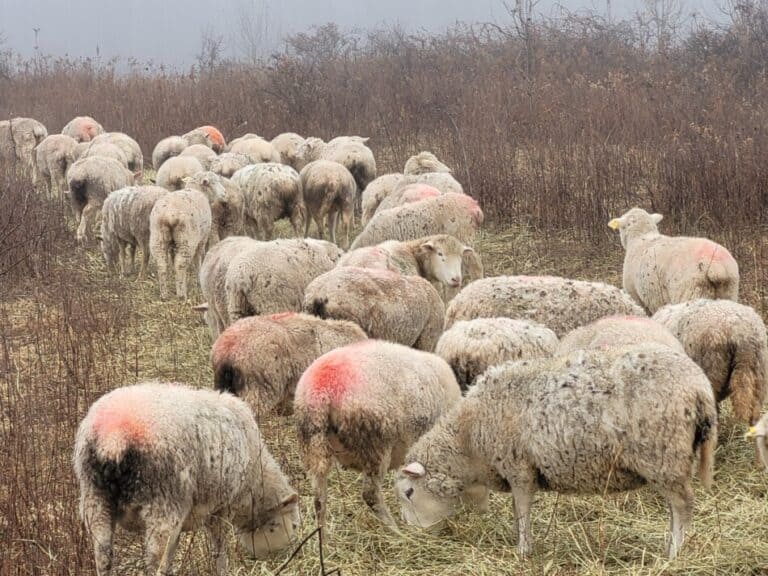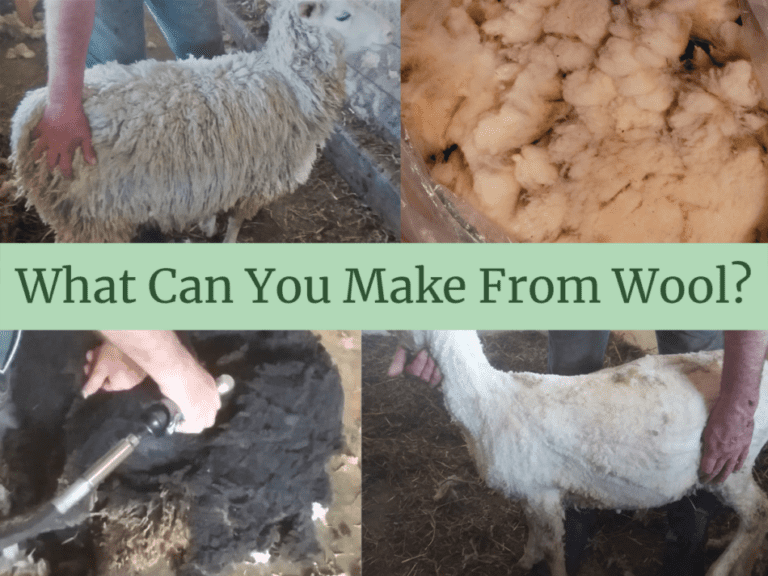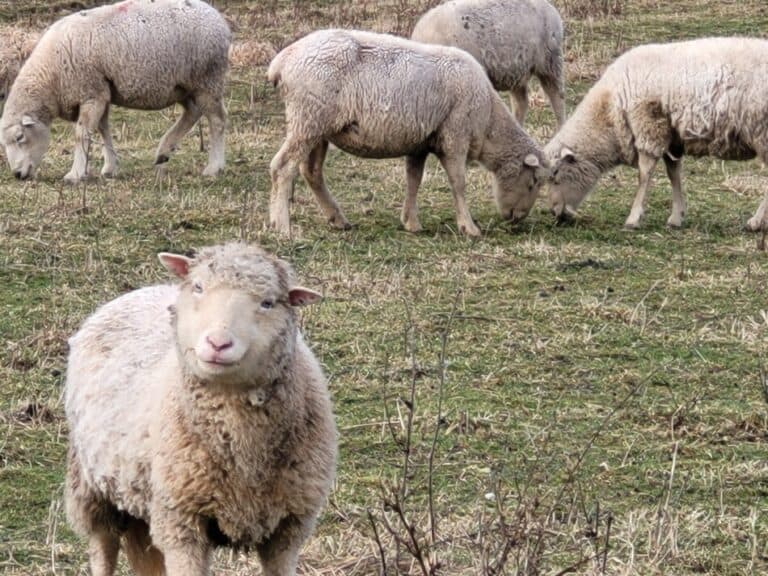Where Do Sheep Live?
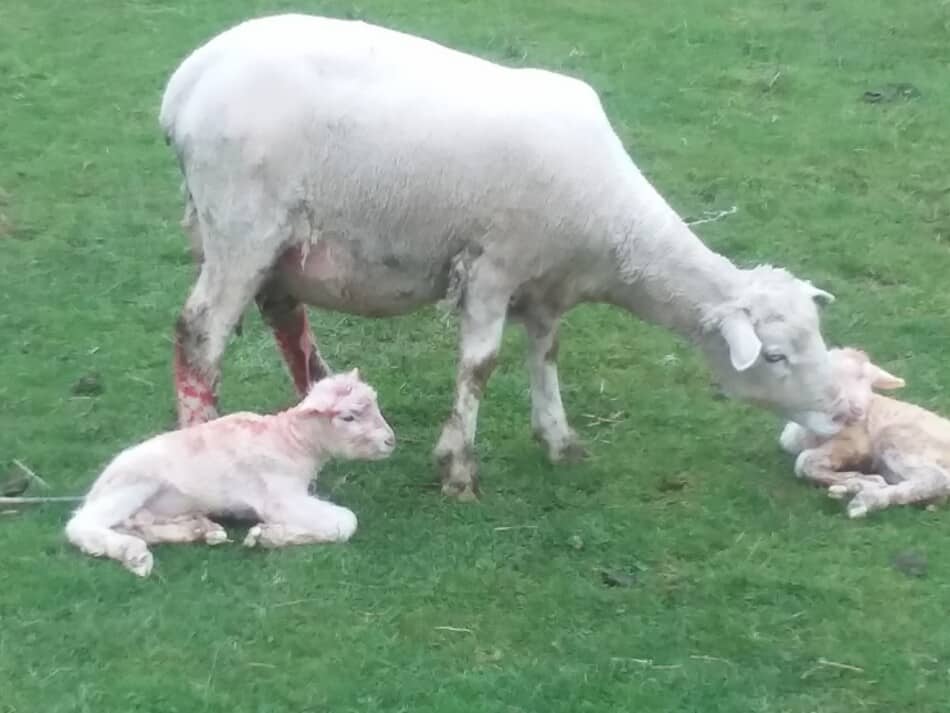
You’ve heard about the huge mobs of sheep on sheep stations and you’ve probably seen people with a few hobby sheep. What’s going on?
How can sheep be raised in so many different places?
Sheep live all over the world in areas that have grass or other forages for the sheep to graze. Sheep can live in huge range flocks or in smaller farm or backyard flocks.
For smaller flocks of sheep, look more towards family farms or backyard sheep enthusiasts, in both wet and dry areas.
Generally, a smaller flock of sheep has more human contact and will be getting fed by the owners at least part of the year.
Space Needed To Raise Sheep gives you an idea of what your sheep need from you. How To Get Started Raising Sheep will help you decide what to do first.
Sheep can live in a dry climate
The biggest populations of sheep are in dry climates.
The advantages of raising sheep in a dry climate are less parasite pressure and the drier air keeps the sheep themselves dry. Not a shock there!
Sheep themselves being dry reduces some of the problems that are more common in flocks living in wetter areas like poopy butts due to a spring flush of grass.
Sheep Breeds Best Suited For Arid Climates is a New Mexico State University article with an informative chart and great breed descriptions and pictures.
The disadvantages of a dry climate are grass is less plentiful, so more land is needed per sheep if the sheep are to find some of their own food, and water is harder to source.
Additionally, if the dry climate is less populated (by people) then there are likely to be more predators lurking about hoping for an easy meal.
Sheep can live in a wet climate
We live in a humid area (Ohio) and sheep do well here, since there is plenty of water and grass.
The catch for our area is having the land for the sheep, since land prices are higher here than in a dry area, and keeping the grass fit for sheep.
What is involved in keeping grass fit for the sheep? Managing the regrowth and dealing with parasites, (since most of the parasites would be picked up through eating contaminated grass).
A more humid environment also seems to have more foot problems than a dry environment.
Partly because here the hoof wall does not get worn down as much as it would in a flock walking over more abrasive surfaces.
If the hoof wall is not worn down, it bends over from the weight of the sheep. This bent over spot is ideal for harboring problems like foot rot.
Lambs live with the ewes (their moms)
Lambs live with the ewes, where ever the ewes are being raised.
Lambs are normally born in the late spring or early summer when the weather is nicer and the ewe can more easily care for them in the pasture. Lambs born in colder weather will be in the barn with their mom.
No matter when a lamb is born, it needs the ewe for nursing and nurturing until it can take care of itself, which will be anywhere from three to four months old.
Once the lamb is old enough to take care of itself, it is normally put in a group of peers, all of which are weaned. It will live with these weaned lambs until it is sold or added to the breeding flock.
Most sheep need a shelter
Sheep will need some sort of shelter. It does not have to be a building, it needs to be an area where they can get out of the wind and most of the rain.
For the bigger flocks, the size of the group provides heat and a wind block to keep most of the weather off of all but the outer most sheep.
For smaller groups of sheep, they need an area where they can get out of the wind and most would really like some shade.
This could be a grove of trees, a three sided shed or under a shrub or hedge line.
Most people would have some sort of way to catch the sheep and the shelter they use is likely to be there as well.
We leave the majority of our sheep out year round-snow, rain, heat all of it.
Keep in mind that the sheep need to be well fed to put out the heat needed to live outside for the winter and they will still need some sort of shelter, even if it is in the form of a wind break.
In our experience, sheep handle the snow far better than the heat.
They can huddle together for heat or move to a place where there is less wind, but they can not move away from heat.
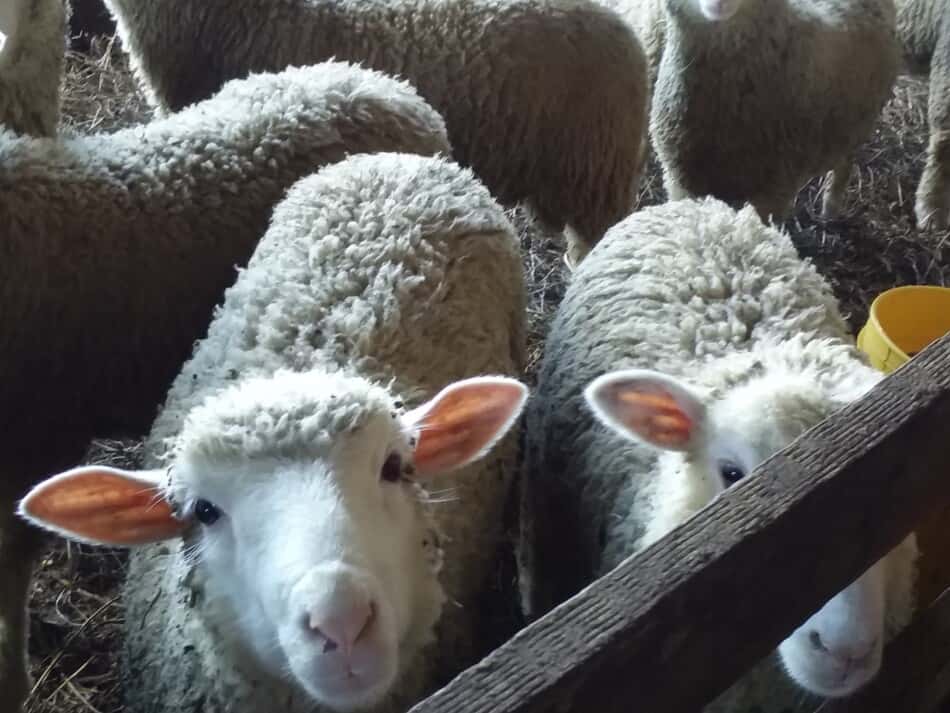
Sheep do not need a pasture
Sheep can be raised indoors. Here are three examples that I have come across.
- Canadian sheep and grain farmer, Sandi Brock who has a YouTube channel all about her completely indoor sheep operation and she has 350 ewes!
- I have also seen some pictures of weaned lambs being raised in a slat floored barn in Ireland.
- The farm where I got my border collie has 300 ewes and keeps all of the sheep inside for lambing and they stay inside until the lambs are sold and the ewes are bred back, so only gestating (non milking) ewes are out on pasture.
I’m sure there are plenty more these are just a few sheep farms that I know of keeping sheep indoors.
Another situation for sheep without pasture would be in a very dry climate with a small flock of sheep.
The sheep would be outside but the paddock or pen area would not have enough grass for them to eat.
These sheep would need all of their food brought to them.
The best example I can think of for this is actually with goats, but the idea would be the same.
- Weed ’em and Reap has a website and a YouTube channel where they have goats in this type of a situation-a dry land lot with space but no grass since they live in Arizona.
Sheep raised in your backyard
Sheep in your backyard is a great way to save some money on mowing. Sheep will act like lawnmowers and graze down the grass in your backyard.
The advantage to sheep as a yard animal is that they are quiet and normally manageable.
As long as they are well fed, sheep are generally happy to stay in their area (unlike goats).
They will need to be fenced off of anything that you don’t want them to eat.
Even if you don’t think they will like your favorite shrub or landscaping plants, fence them off of it.
Just a nip or two from each sheep taste testing a plant will cause damage quickly.
Can Sheep Jump Over A Fence? shows you the times your sheep may be tempted to jump and what you can do about it.
Backyard sheep can be very friendly
Sheep can become very friendly, especially if you are willing to give them snacks like you would give treats to a dog.
If your sheep are wary of you at first make sure they learn that you+bucket=snacks.
If your sheep are nervous at first, go slow. Sheep are very food motivated.
Put the treats on the ground or in the feeder while you stand and watch. Then next time stand closer until they will come to you without hesitation.
This will take time. Do not go to the sheep, have them come to you. They will head your way when they are less nervous around you.
Do Sheep Eat Fruit Trees? gives you some insight into keeping sheep close to your favorite trees!
Divide your yard to support more sheep
The number of sheep you can support on your yard is based on the size of the yard and what you want to do management wise.
If you are willing to move fence and rotate the sheep around then your grass will last longer.
Read Backyard Sheep for more details including a graphic showing how I would divide up a yard for my sheep.
If you want to just fence in the whole thing and let them eat it as they please, you will get less grass growth but they won’t need you to do anything other than check water as long as there is grass to eat.
